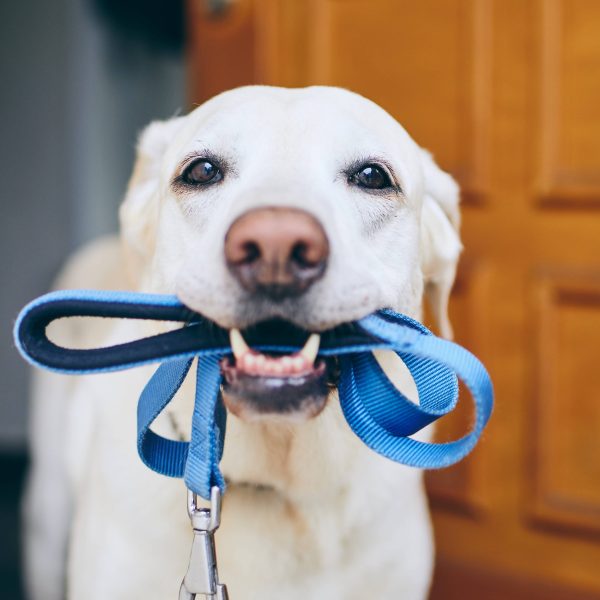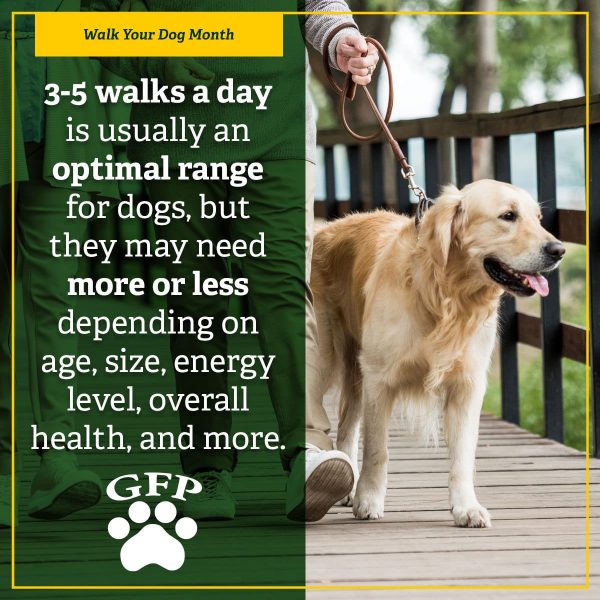5 Useful Dog Walking Tips

Walks are probably a highlight of your dog’s day. It gets them out of the house, exercises them, and gives them time to explore and sniff their surroundings! To get the most out of your dog’s walk and to ensure a great time for both of you, here are some useful dog walking tips:
1. Let Your Dog Sniff
Humans will never understand a dog’s desire to sniff, but it is important to let your dog sniff as you walk them. Dogs have an incredible sense of smell that they use every moment of their day. Since dogs use their noses to explore and make sense of the world around them, it’s important to let them sniff to their heart’s content when you’re out on walks!
Pulling your dog away from an interesting smell is harmful to your dog because they lose the chance to understand their world. Plus, this behavior might be one of the ways you’re annoying your dog. Allow extra time for walks just to give your dog extra time to sniff their surroundings.
Some dogs could sniff forever, though, so if this is your pup, consider some training exercises. The earlier you work on walking behavior, the better your results will be. Reward short bursts of walking with a treat and sniffing time. As your dog learns, they will understand they need to walk with you, but also will be allowed to sniff the world around them.
You can also teach your dog nose targeting to get their focus and train them to respond to a command to start walking again. This can help you teach them when it’s time to stop sniffing and move on.
2. Don’t Pull Their Leash
Pulling on your dog’s leash might feel like the best choice when your dog isn’t going where you want them to go. And, your dog probably thinks you walk too slowly because they want to explore everything!
Unless you have done a lot of work on leash training, this can result in a tug-of-war with the leash and this can be harmful to both you and your dog. The leash that’s attached to your dog’s collar will cut into your dog’s throat and apply pressure to the trachea. If your dog is prone to pulling, this is one of the reasons why a dog harness may be better than a collar.
3. Teach Your Dog to Walk With the Loose Leash Technique
Teaching your dog to walk with the loose leash technique will help you and your dog stay safe during walks. It also keeps your walk more enjoyable for both of you and helps prepare your dog for a dog walker in case you ever need to use one.
The loose leash technique is allowing the leash to hang loosely (like in a J shape) while you walk. If your dog pulls and the leash goes taut, stop your dog. Only allow them to walk while the leash is slack. Reward and praise your dog for walking with the loose leash.
If you’re struggling to implement this technique, consider choosing a dog harness or head lead. These can also be helpful if you have a dog who’s determined to pull no matter what. The harness will keep you and your dog happy and safe on walks.
4. Use the Right Leash for Your Dog
It’s important to also use the right leash for your dog and make sure you are not using one that is uncomfortable for them or that could cause injury to either of you. Retractable leashes may look nice, but they can also break or quickly become tangled. Unless your veterinarian suggests otherwise, it’s generally safe to go with a sturdy, old-school leash.
5. Bring the Essentials Along
Depending on how often you walk your dog and how long your walks are, consider bringing a few essentials along. Make sure you have your cell phone in case of an emergency. If it’s hot out, bring water for you and your dog. Dehydration is no joke, so make sure your dog can drink if they need to.
Bring along treats in case you’re working on training. Rewarding your dog for walking well will help reinforce good habits. And, don’t forget poop bags. Picking up your dog’s waste is courteous and something every dog owner should be doing; it’s also usually required in most places.
At a minimum, dogs should be walked at least 15 minutes twice a day, which means you will likely need to go on walks at night at some point. If you are walking at night, bring a flashlight and have reflective gear for you and your dog. Bringing these items and following some safety tips for walking your dog in the dark can help both you and your dog stay safe when visibility is low.
Taking a walk with your dog is one of many ways to exercise with your dog and these are just a few useful dog walking tips. Just remember to have fun with your dog! Walks are a great bonding time for you two and are often one of the best ways to make your dog happy, so enjoy the time together.

